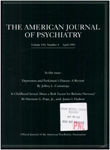Second-generation deinstitutionalization, II: The impact of Brewster v. Dukakis on correlates of community and hospital utilization
Abstract
On the basis of the principle that patients have the right to be treated in the least restrictive setting appropriate to their needs, all 368 patients at Northampton State Hospital (Massachusetts) were discharged over a 10-year period. Three-quarters were discharged to community settings. Half of the patients were never rehospitalized, but many others continued to display patterns of recidivism. On the assumption that socially dysfunctional behavior would improve after discharge, the funded community system emphasized assessments, residential placements, and crisis intervention and deemphasized treatment. The findings raise many questions about the efficacy and wisdom of attempting to serve an entire state hospital population in the community.
Access content
To read the fulltext, please use one of the options below to sign in or purchase access.- Personal login
- Institutional Login
- Sign in via OpenAthens
- Register for access
-
Please login/register if you wish to pair your device and check access availability.
Not a subscriber?
PsychiatryOnline subscription options offer access to the DSM-5 library, books, journals, CME, and patient resources. This all-in-one virtual library provides psychiatrists and mental health professionals with key resources for diagnosis, treatment, research, and professional development.
Need more help? PsychiatryOnline Customer Service may be reached by emailing [email protected] or by calling 800-368-5777 (in the U.S.) or 703-907-7322 (outside the U.S.).



